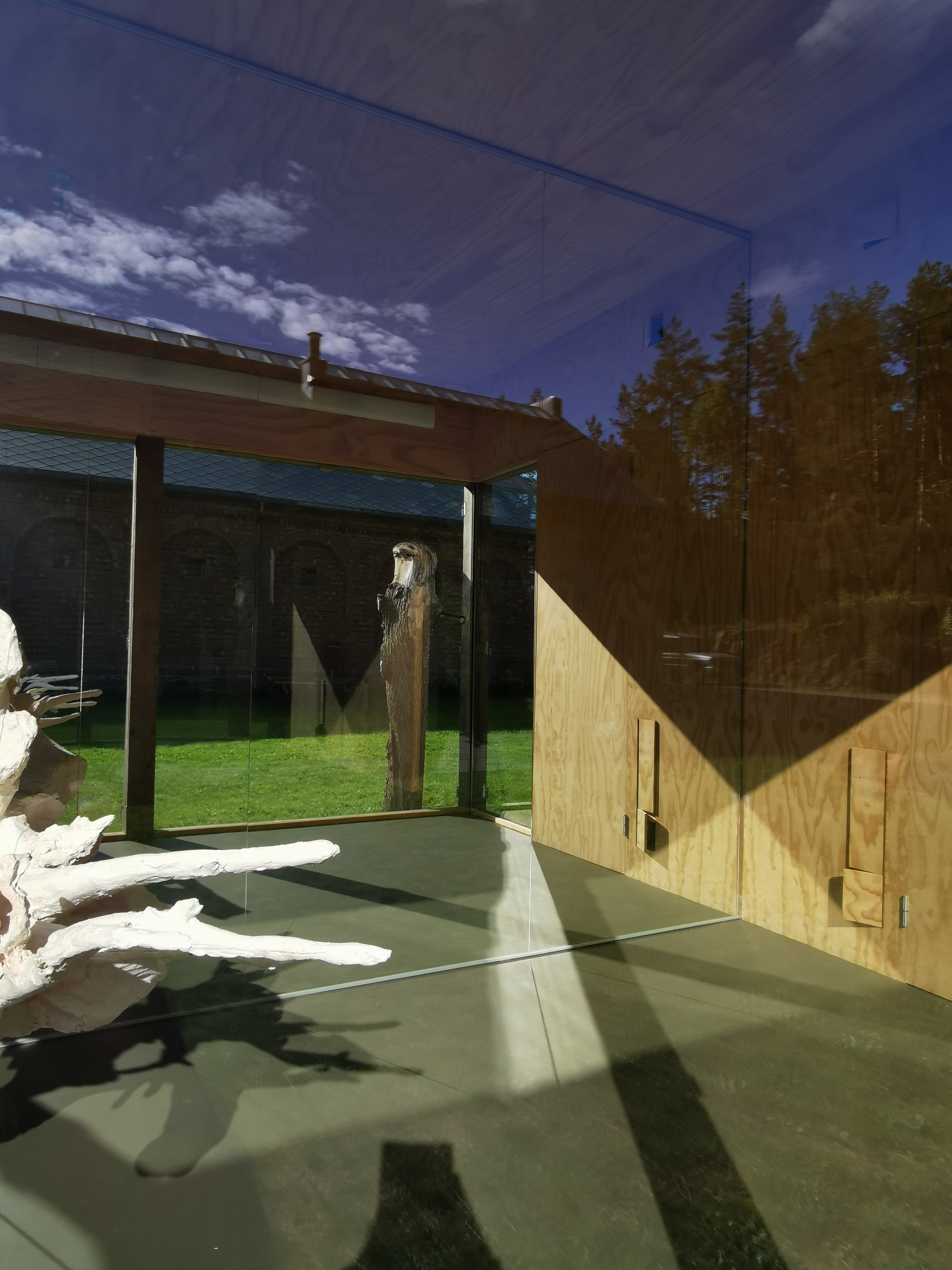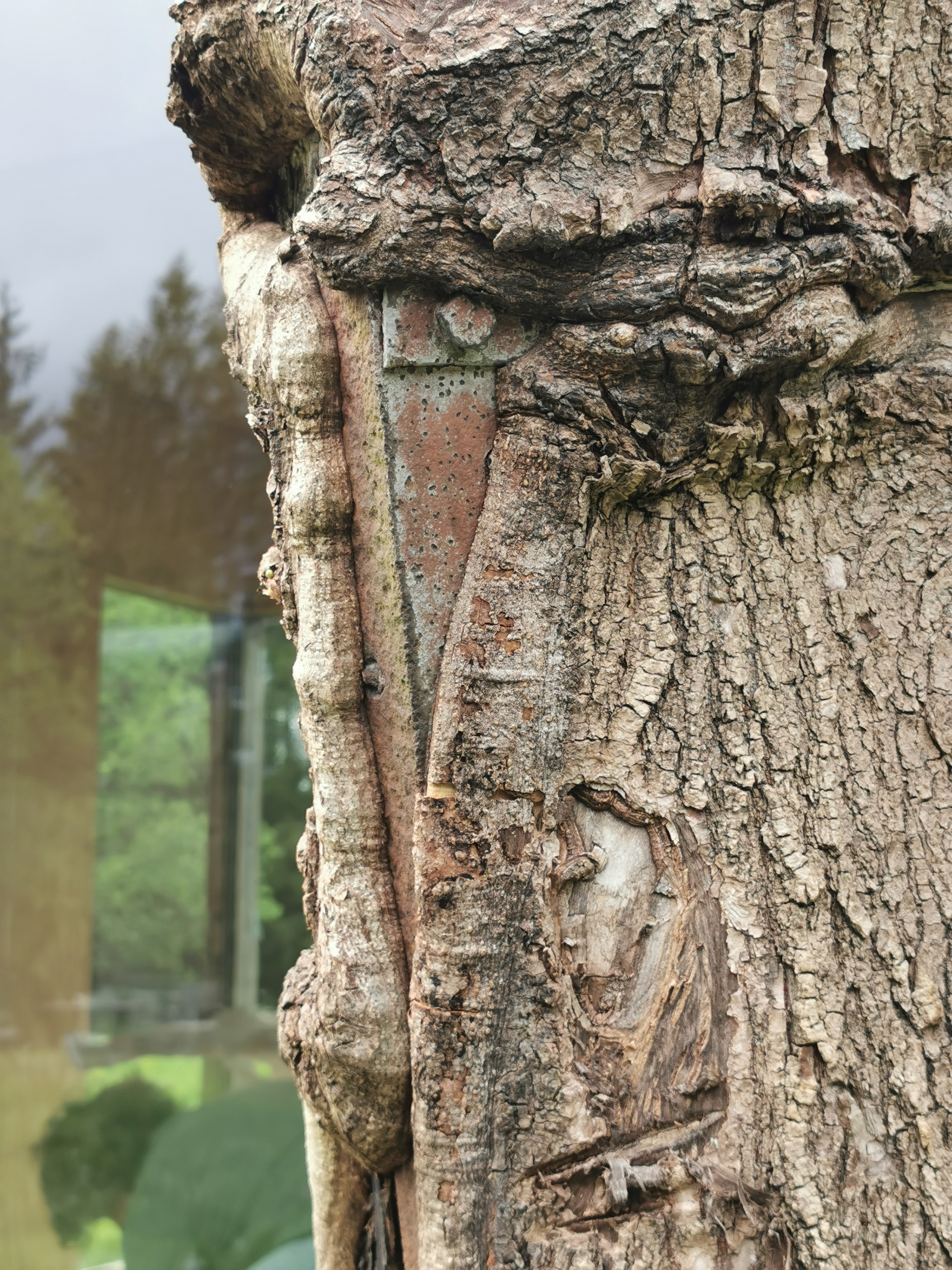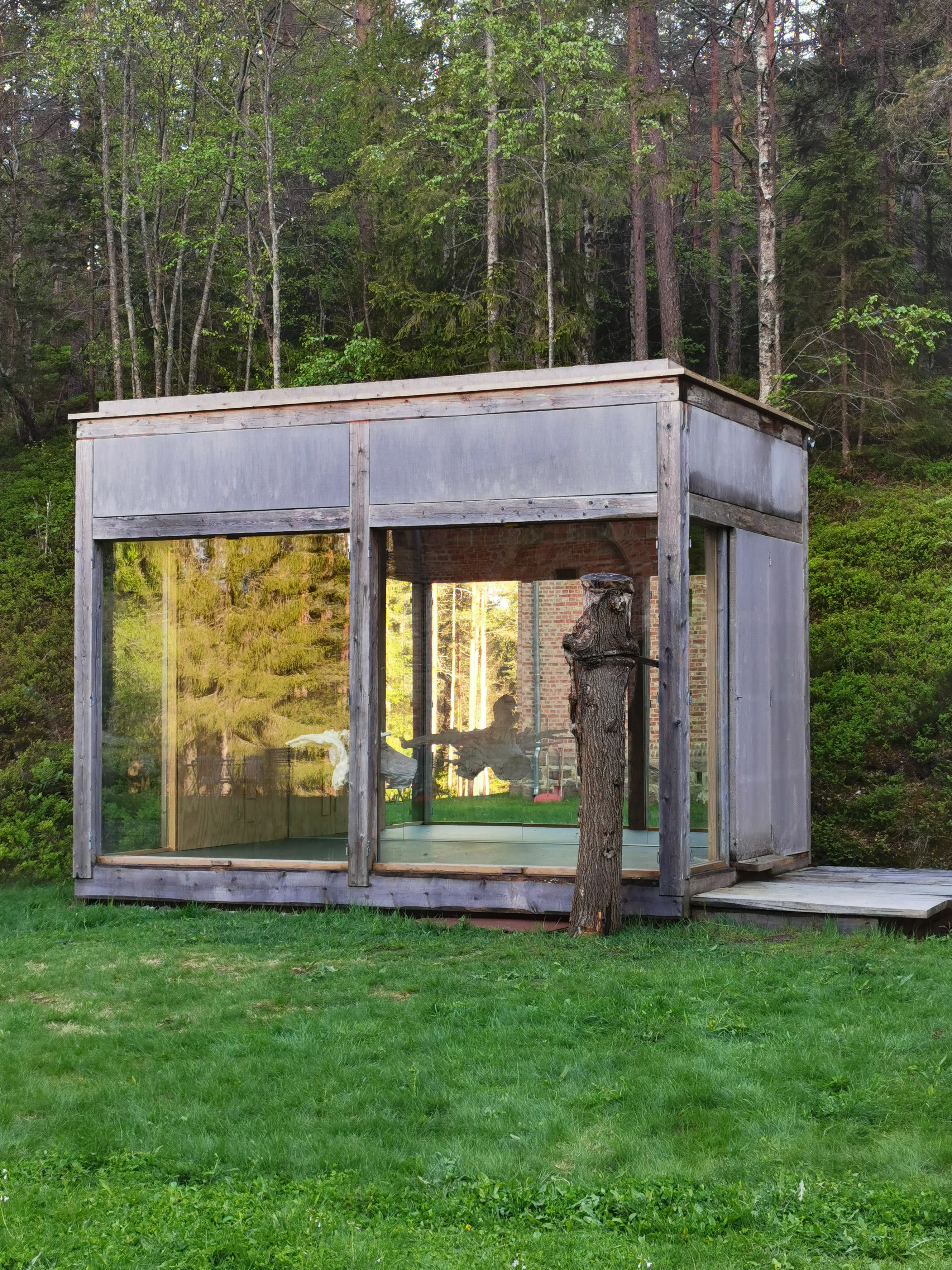Bo Bisgaard, Ole Jørgen Ness
ARBUSCULACurated by 222T
Jane 2022/1, June
We stand in a tightening world looking for air in the people and work among us. We point to our inseparability from nature’s being and the elusive strata we move and are moved by in ways we barely intuit. We worry. We think about what our friends are doing, what we have been doing, about our collective efforts to stay close to existentially vital matters that are increasingly inaccessible to our human lives, even through art.
We look to each other in order to understand how we build and perceive the world we imagine, because we do build it. That is what it takes, we feel, to remain in concert with strings that drive and maintain our humanness. No matter what, symbiosis.
It happens that 222T near the Akershus fortress and K.O.S A’s Jane pavilion, near an armoury in Maridalen’s forest, are equivalent, small project spaces in vastly different environments. Both are adjacent to military installations and are, first of all, literal windows, offering views into the changing worlds that periodically inhabit them. One in the belly of an urban labyrinth, an end of a corridor, the other a displaced urban storefront in a nature park. They employ a shared, precarious ambiguity about what they are and where they are. Odd places.
What if we made a switch and moved the curatorial intent of one into the other? We did that.
In the case of K.O.S.A. / JANE and 222T / ITCA, the venues mirror each other like separated twins. Space-facial features could indicate family relation. It’s a peculiarity not to ignore. It makes one think of morphogenetic fields, noospheric information and memetic transmission.
A mycorrhiza is a symbiotic association between a green plant and a fungus. The plant supplies the fungus with molecules such as sugars, and in return the fungus supplies the plant with water and mineral nutrients. Mykorrhizas are located in the roots of vascular plants, and there is fossil evidence that early land plants that lacked roots formed arbuscular mycorrhizal associations (arbuscules are typically formed by fungi penetrating the cortical cells of roots of a vascular plant.) From ARBUSCULA's perspective, a site of exchange invites and literally actualises perception by reflection, an agency that mirrors and moves into matter, as fact. Specifically, the project ARBUSCULA is a site of nutrient exchange where physical and temporal transfigurations and transplantations occur between various understandings of what is and was, for example, a tree in the forest.
Photos by Vera Wyller

















